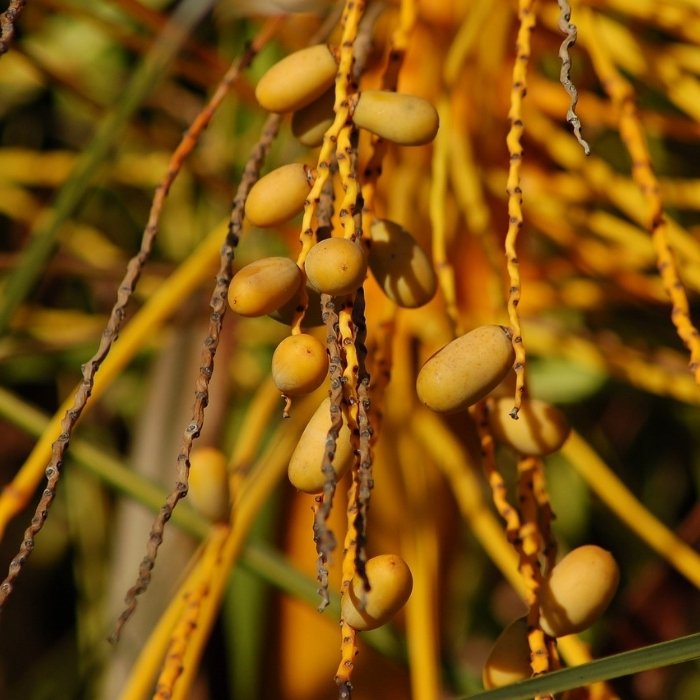Palm Tree Fruit: A Comprehensive Guide
Palm trees are iconic symbols of tropical and subtropical regions, known not only for their majestic beauty but also for their diverse fruits. These fruits, produced by various species of palm trees, are not only a source of nourishment but also carry cultural, economic, and ecological significance. In this article, we delve into the world of palm tree fruits, exploring their types, uses, and benefits in detail.
What Are Palm Tree Fruits?
Palm tree fruits are the reproductive products of the palm family, scientifically known as Arecaceae. These fruits come in a wide array of shapes, sizes, and colors, depending on the palm species. From the familiar coconuts and dates to lesser-known varieties like betel nuts and acai berries, palm fruits play an essential role in many cultures and cuisines worldwide.
Common Types of Palm Tree Fruits
1. Coconut
The coconut (Cocos nucifera) is perhaps the most recognizable fruit of the palm family. It is a versatile fruit with multiple uses:
- Nutritional Value: Rich in electrolytes, healthy fats, and fiber.
- Uses: The flesh is eaten fresh or dried (copra), the water is a refreshing drink, and the oil is a key ingredient in cooking and cosmetics.
- Economic Importance: Coconut products contribute significantly to the economies of tropical countries.
2. Date Fruit
Dates come from the date palm (Phoenix dactylifera) and are a staple in Middle Eastern and North African diets.
- Nutritional Benefits: High in natural sugars, dietary fiber, and essential minerals like potassium.
- Culinary Uses: Consumed fresh or dried, dates are used in desserts, snacks, and traditional dishes.
- Cultural Significance: Dates hold religious and cultural importance in many Islamic traditions.
3. Acai Berries
The acai palm (Euterpe oleracea) produces small, dark-purple berries that have gained popularity as a superfood.
- Health Benefits: Rich in antioxidants, acai berries support heart health and combat oxidative stress.
- Culinary Applications: Often used in smoothie bowls, juices, and dietary supplements.
4. Betel Nuts
Derived from the areca palm (Areca catechu), betel nuts are widely consumed in South and Southeast Asia.
- Traditional Use: Chewed with betel leaves as a stimulant.
- Cultural Practices: Betel nut chewing is a long-standing tradition in many Asian countries.
5. Oil Palm Fruit
The oil palm (Elaeis guineensis) produces fruits that are a major source of palm oil.
- Economic Role: Palm oil is a key ingredient in cooking oils, margarine, and processed foods.
- Environmental Concerns: The production of palm oil has raised issues related to deforestation and habitat loss.
Nutritional Benefits of Palm Tree Fruits
Palm tree fruits are nutrient-rich and offer a range of health benefits:
- High in Fiber: Fruits like dates and coconuts support digestive health.
- Rich in Antioxidants: Acai berries and other palm fruits combat free radicals and promote overall wellness.
- Good Source of Energy: The natural sugars in dates and coconuts provide a quick energy boost.
- Essential Vitamins and Minerals: Palm fruits contain vitamins A, C, and E, as well as potassium, magnesium, and iron.
Culinary Uses of Palm Tree Fruits
Palm fruits have versatile culinary applications across various cuisines:
- Coconuts: Used in curries, desserts, and beverages.
- Dates: Incorporated into baked goods, smoothies, and savory dishes.
- Acai Berries: Blended into juices, energy bars, and smoothie bowls.
- Palm Oil: A staple in frying and baking.
Economic and Cultural Importance
Palm tree fruits are integral to many economies and cultures:
- Economic Impact: The trade of palm products like coconut, dates, and palm oil generates significant revenue.
- Cultural Practices: Palm fruits are often used in religious ceremonies, festivals, and traditional medicines.
- Sustainability: While some palm products face criticism for environmental impacts, sustainable farming practices can mitigate these issues.
Environmental Challenges and Sustainability
Palm fruit production is not without challenges. The demand for palm oil, in particular, has led to deforestation and habitat destruction. However, efforts are being made to promote sustainable practices:
- Certified Sustainable Palm Oil (CSPO): Encourages environmentally friendly cultivation.
- Community Initiatives: Empower local farmers to adopt sustainable farming techniques.
Conclusion
Palm tree fruits are a vital resource with diverse applications in food, health, and industry. From the refreshing coconut to the nutritious acai berry, these fruits provide countless benefits while shaping cultures and economies worldwide. By adopting sustainable practices, we can continue to enjoy the richness of palm tree fruits without compromising the environment. Spider Plant Flowers: Complete Guide to Bloom Care

